Eindhoven Engine: powerhouse of innovation
Kick-off Eindhoven Engine on April 15th
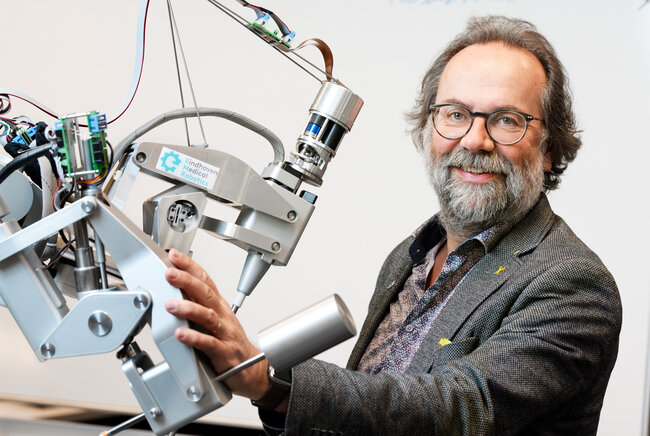
As a ‘playground for researchers’, Eindhoven Engine also intends to follow in the footsteps of the legendary NatLab run by Philips - one difference being that Eindhoven Engine will be borne by multiple companies in the Brainport region, and will stake out a central role for researchers and students of TU/e, Fontys and TNO. In time, the whole of the Multimedia Paviljoen (MMP) on TU/e campus will be filled by this ‘innovation accelerator’, which hopes to expand to some 500 participants.
With Eindhoven Engine we want to accelerate innovation by uniting experience with young talent,” says university professor Maarten Steinbuch. “And not somewhere in a company, but at a separate location; that will give disruptive thought and action more of a chance and, above all, foster cross-fertilization between the projects and thus between the various industry groups.” That, he believes, is necessary because the digital revolution is connecting everyone and everything, and at some point no one party will be able to solve the challenges facing society.
A vibrant, inspiring location is envisaged, a home port for projects lasting two to four years, driven by five to twenty participants, including students at every educational level. In time, getting involved in a project at Eindhoven Engine should become a very natural step for employees of companies in the region, Steinbuch hopes. “You'll join Eindhoven Engine to gain new knowledge or, or the other hand, to share it, to give and receive inspiration. And for your employer it is a good investment because the Engine affords a head start and also puts you in touch with students while they are still developing, so you can get them enthusiastic about your company.”
Transformation
Eindhoven Engine is currently undergoing a smooth transformation from an abstract vision of the future held by Steinbuch to a physical organization. To give the organization shape, last year Eindhoven Engine BV was founded, with Clement Goossens as its director. There is also an Eindhoven Engine Support Team, with representatives of TNO, Fontys, and TU/e. Italian-born Lisa Seravalle of the Support Team explains what her duties involve. “The Eindhoven Engine Support Team arranges the project contracts with the participating companies, organizes training sessions and is responsible for public relations,” she says. In English, of course, the official language of Eindhoven Engine. “The business sector in this region is extremely international, and we want to attract international talent,” says this jurist.
As well as the limited company and the Support Team, there is an advisory council of representatives of the founders of Eindhoven Engine - TU/e, TNO, Fontys and the companies Philips, Signify, NXP, NTS and VDL, Goossens explains. Only cofounder ASML has not yet committed to joining this body. The advisory council is chaired by initiator Steinbuch, who also represents the organization in his role as ambassador of Eindhoven Engine, together with industrial figurehead Guustaaf Savenije, CEO of VDL-ETG.

Workshop
The Multimedia Paviljoen is the ideal location for Eindhoven Engine, believes Goossens. “It was once a workshop, and that makes it easy, for instance, to bring in equipment. Moreover, thanks to the presence of the startups and the business developers at Innovation Lab and Next Move, the place has the right dynamic atmosphere.”
“We are now in discussion with TU/e and with Fontys to see how we can organize the students' involvement,” says Goossens. “Many of them are expected to come from the PDEng programs since they are of a similar nature to Eindhoven Engine projects. For this why it has also been decided to give the PDEng community its own spot in the Multimedia Paviljoen.”
Seven projects have already been defined within a number of main areas: ‘connected driving’, which is being led by chip manufacturer NXP, ‘medical technologies’ with input from Philips, and ‘wafer stages’ with ASML. In addition to this, projects will be defined relating to Brainport Smart District, the new ‘smart’ neighborhood to be built in Helmond. “We are seeing a great deal of enthusiasm among students, they evidently find the subjects and the cooperation with the business sector very interesting,” says Goossens.
Academy
As part of Eindhoven Engine, an Engine Academy will be founded. “Courses for students and researchers will be provided at the Academy, these will teach how to deal with the complexities of innovation. As well as how to set up a company, what you need to know about patents and ownership rights, and so forth. In time we'd like to open up these courses to the entire region. That will mean that scientists and students can follow them in the company of researchers from NXP, Philips and ASML. At a stroke, the participants will be able to expand their networks, and they'll also learn how things are done at other organizations.”
Another task that Eindhoven Engine will be taking on is public outreach. “Eindhoven Engine should become a beacon, people should know that we are working here on solutions for societal problems,” says Goossens. “In concrete terms, this is something we have been considering with parties like Singularity University, and we have also been speaking to PSV. It would be great if we could appeal to the huge fan base a top club like PSV has here in the region. In part to learn what they are finding to be today's pressing problems when it comes to health care or mobility. Like everyone else, these people sit in traffic jams or have health problems that we could perhaps tackle if we work through the agency of Eindhoven Engine.”
People should know that we are working here on solutions for societal problems
CLEMENT GOOSSENS
DIRECTOR EINDHOVEN ENGINE BV
Eindhoven Engine is funded partly by Brainport National Agenda for Action; the sum of fifteen million euros has been made available for a period of seven years. In addition, the supporting companies are contributing, both in cash and in kind, as are the various regional government bodies. Via the HTSM 'top sector' (an initiative of the Ministry of Economic Affairs) for every three euros of company input, another euro is donated to Eindhoven Engine.
“Over the longer term,” says Goossens, “we also expect to be able to secure European subsidies, for research via Horizon Europe, as well as perhaps Erasmus-like programs for students and to set up regional innovation systems. Perhaps we can also attract funds for the SME. In principle, however, this type of public funding is intended only for the startup phase. Ultimately the companies involved have to become convinced that investing in Eindhoven Engine is a wise move.
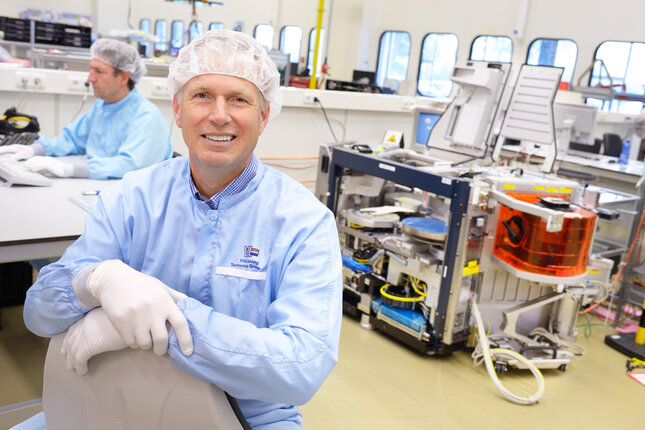
“We hope to fulfill a pioneering role”
Guustaaf Savenije, director of VDL ETG, is the industrial figurehead of Eindhoven Engine. “We were already affiliated to the High Tech Systems Center at TU/e, and Eindhoven Engine is an extension of that,” he says. “This region's industry is currently doing very well, but even so in five, ten or twenty years' time you'll need new things. Many new ideas used to come out of the Philips NatLab, where Maarten Steinbuch and I both once worked.”
But this illustrious ‘playground’ created by Philips no longer exists, and this role should pass to Eindhoven Engine; this is a view shared by Savenije. “Within Eindhoven Engine the critical mass needs to emerge that individual companies working alone cannot generate.”
VDL ETG itself is primarily a supplier of other companies, yet the importance of investing in the development of new products is recognized at the company, Savenije emphasizes. “In this way we hope to fulfill a pioneering role for our 'competitor colleagues' in the region. And I'm not just talking about Eindhoven or even Brainport, but about the entire surrounding area, including Leuven, Aachen and Twente.”
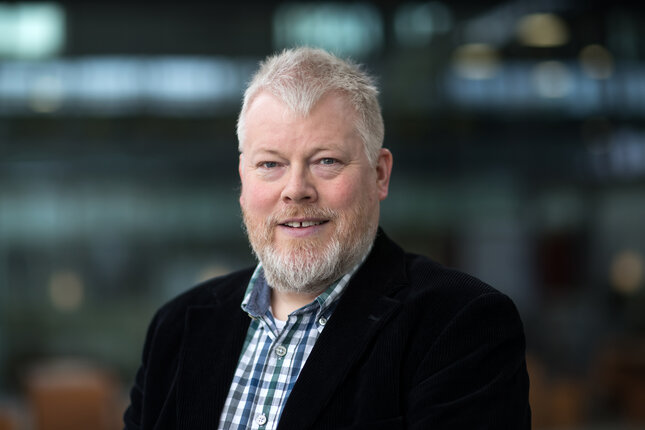
“Using plasma technology you can neutralize contaminants”
Ton Peijnenburg is Deputy Director of VDL ETG Technology & Development. On behalf of VDL ETG he is holding discussions with TU/e to see whether VDL can finance three or four doctoral candidates, he says. “The subject we want to tackle is contamination control. This is because the requirements placed on cleanliness, for all the equipment for which we make parts, such as electron microscopes or mass spectrometers, are becoming ever more stringent.”
And so it is getting increasingly difficult to keep the parts in question sufficiently clean, he explains. “This has prompted us to consider whether we can remove contamination proactively; and we're talking about contaminating particles measuring upwards of 20 nanometer. It might be possible to use plasma technology to neutralize them. We're also looking at the design of the equipment, with a view to maximizing the prevention of contamination.”
In theory, the doctoral candidates at Eindhoven Engine would build on projects carried out by the High Tech Systems Center belonging to TU/e. According to Peijnenburg, two groups at the university are already involved: Marc Geers's group (Mechanical Engineering) for the mechanics and Gerrit Kroesen and Job Beckers's EPG group (Applied Physics) for the plasma research. They will be joined by a doctoral candidate supervised by Herman Clercx (TN) who will study the transport of particles at low pressure. “In addition, we want to get a couple of PDEng trainees to build a functional model within two years. I think that combining that with the more fundamental work of the PhD candidates could work very well.”
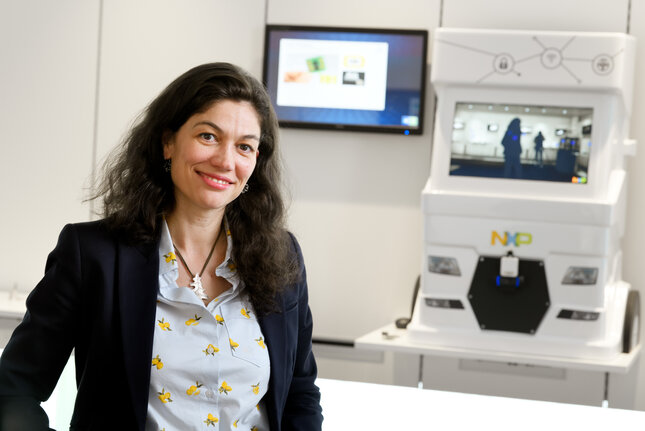
“We want real-time image recognition for use in cars”
The Eindhoven Engine project carried out with NXP is all about autonomous systems in cars and is intended to prevent the kind of accidents currently caused by unexpected situations or drivers not paying attention, explains Clara Otero Perez, head of Systems Innovations at NXP Automotive. “To start with, you have to be able to very precisely measure where other vehicles and any other obstacles are located. Together with TU/e we are working on both radar, with Marion Matters's group, and on visual systems, in cooperation with Gijs Dubbelman and his colleagues.”
At Eindhoven Engine two doctoral candidates will be appointed in each of these areas. In addition, there is scope for a postdoc, a PDEng trainee and a dozen graduating students, tells Otero Perez.
Misunderstandings
As cars are increasingly equipped with radar, a new risk arises: misunderstandings as signals from other cars are interpreted as coming from the driver's own car. To identify such ghost signals, you could have cars communicate with each other and coordinate their radio frequencies, or even add a unique ‘label’ to each radar signal to make its origins immediately clear, she explains.
“We also want to make the radar more accurate, so that objects can be recognized at greater distances. For visual systems too, we'd like to make this kind of improvement. Is an object a vehicle, a dog or a plastic bag, for example. There's no room for error here, so all ‘false positives’ have to be removed.” Added to which, although this image recognition works pretty well already, it's not real time, which is of course what you need if you want to prevent road accidents. “So we are going to work with new algorithms for sophisticated neural networks that have been optimized for such tasks.”
Otero Perez is positive about Eindhoven Engine, and has high hopes, especially of the dynamic that will arise in situ - in particular between the various groups, which can learn from each other. “We hope an atmosphere will be created, similar to that which permeated Philips's old NatLab, where people with all sorts of backgrounds used to work cooperatively.” After four years, to her mind, the technologies being studied should have made great strides towards maturity, and have come closer to being applied in practice. “We are already cooperating very well with TU/e, so I feel that's achievable.”
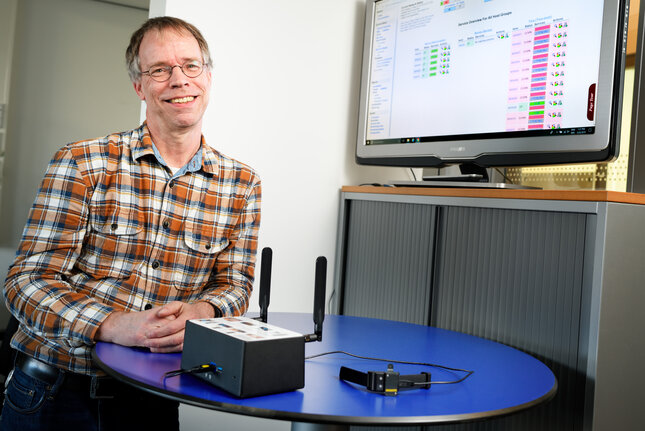
“I cycle over to the Catharina Hospital regularly to catch up"
Reinder Haakma is principal scientist at Philips Research and involved in a new activity planned to have five subprojects, all of which fall within the scope of the existing collaboration e/MTIC (Eindhoven MedTech Innovation Center). In this framework, Philips and TU/e are cooperating with three medical institutions (Kempenhaeghe, Máxima Medical Center, Catharina Hospital) in the field of technology for health care. The aim of e/MTIC is to help tackle, in a quick and efficient way, the societal problem of rapidly rising health care costs.
For Eindhoven Engine ten doctoral candidates and two postdocs are envisaged, employed by the health care institutions and TU/e. Philips Research is supplying expertise and the technological platforms for the research; the physicians in the hospitals are supplying the clinical insights and the contact with patients. TU/e is providing the deeper understanding of machine learning, statistics and signal processing. “We've being doing it like this for some now, and it works really well,” says Haakma.
Haakma is also enthusiastic about the forthcoming projects and is very curious about the role Eindhoven Engine will play. He doesn't yet expect physicians to spend whole weeks working on the TU/e campus, but the closeness of the partners - all within cycling distance - is indeed important, he is keen to stress. “I cycle over to the Catharina Hospital regularly, certainly every month, and sometimes once a week even, to catch up. It's an opportunity to really get to know each other, an opportunity you are denied if you are cooperating with a partner in Amsterdam or Groningen.”
Remote monitoring
Most projects involve technology designed to enable manageable approaches to the home monitoring of patients, their heart rate and breathing for example, over an extended period. “There's no shortage of devices at present, like fitness trackers and smartwatches, that do this to some extent, but they don't provide a total solution that clinicians are willing and able to work with - and are allowed to,” says Haakma.
One example concerns the detection of atrial fibrillation, an abnormal heart rhythm that is relatively common, especially among older people. “One of the difficult aspects of this is that the fibrillation is episodic: it comes on gradually and then disappears for a long time. But we do know that over time the condition often worsens and that it greatly increases the likelihood of a stroke or heart attack, due to blood clots. The risk can be considerable reduced with blood thinners, but people often don't notice the atrial fibrillations themselves, so they are at risk and don't know it.”
A health watch can detect this condition. “Using a health watch with green LED light, we are able to measure continuously the varying blood circulation in the skin caused by the heart beat.” And that signal reveals the atrial fibrillation,” Haakma explains. But it is not enough; high quality signal processing is required in order to demonstrate that atrial fibrillation is actually occurring. “When the device issues a warning, we have to be able to show physicians what that is actually based on.”
Parallel to this, they are studying whether it makes sense to have patients make their own single-lead ECG recording at given times. “It would bring us a step closer to the hospital standard for cardiac diagnostics, the multi-lead ECG, and that would increase clinical acceptance of the solution.”
The advantage of this kind of wearable technology is that it opens the way for recording data over a period of months, if that's what is needed to collect enough statistics, without the patient being inconvenienced. As well as with researchers at Signal Processing Systems (Electrical Engineering), Haakma is therefore working with statisticians like Edwin van den Heuvel, professor of Statistics at Mathematics and Computer Science. “After all this is real data science and it involves complex statistics, but the advantage of this method is that it may well be possible to get more information from your data and to demonstrate links that would otherwise require more extensive clinical studies.”
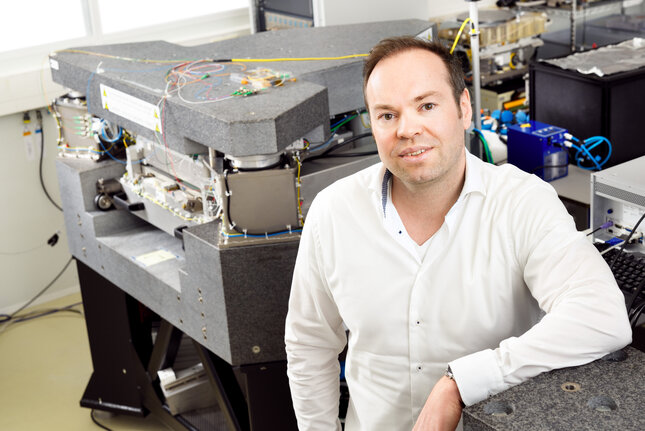
“At ASML we know that you shouldn't try and develop this kind of technology on your own”
In cooperation with ASML, research is being carried out at Eindhoven Engine on a next generation of wafer stage for the lithography machines produced by this Veldhoven-based chip machine manufacturer. “The present wafer stage is an electromagnetic module with which the wafer (a slice of silicon on which the chips are etched, TJ) is moved about under the lens, so that a chip pattern can be etched on the wafer hundreds of times,” explains project leader Wouter Aangenent of ASML Research.
“This stage does this step by step with great accuracy and speed. We are researching an alternative technology, a non-electromagnetic wafer stage that draws its speed and accuracy from a lightweight piezo-electric actuator. The project is focusing on the choice of materials, electronics, the control mechanism, mechatronics and calibration. The aim of the project is to produce a proof of concept.”
The first doctoral candidate on this project started work in September 2018, the second will start in August of this year, and another two vacancies are still open. From the TU/e side, the project will have the support of Mechanical Engineering and Electrical Engineering, with part-time professors Hans Butler of Control Systems (EE) and Hans Vermeulen of Control Systems Technology (ME), both of whom also have ASML connections, providing leadership.
Project leader Aangenent explains why this project is so well suited to Eindhoven Engine: “At ASML we know that you shouldn't try and develop this kind of technology on your own. With issues of materials science, electronics, mechatronics and sensor technology it is very important that you bring together experts from the various groups. Preferably physically, so that you can create a prototype by working iteratively. We expect the multidisciplinary approach and co-location at Eindhoven Engine to make all the difference.”
Kick-off for Eindhoven Engine
Although its wheels have been turning for some time now in a warm-up phase, Eindhoven Engine will be given the official starting shot on the afternoon of Monday April 15th. This will take the form of a kick-off meeting held in TU/e's Auditorium. Following introductory speeches by Board President Jan Mengelers and Engine figurehead Maarten Steinbuch, TU/e alumnus and professional optimist Rudy van Beurden will lead a creative session. Designed to give an impression of the dynamism the minds behind Eindhoven Engine are seeking to achieve, this session will be supported by the technology of Changing Perspectives, an invention by another alumnus, Philémonne Jaasma.
“We are calling this session the Engine Experience,” explains Engine director Clement Goossens. “We will set up some twenty interactive tables where, using special tokens, groups of participants can work, each token representing a particular resource, such as money or work force. Whatever is done at each of the tables will be projected in real time onto a big screen so that the groups can learn from one another.”
There will also be a tech fair at which the participating companies will present themselves and visitors will be shown the projects that are already underway at Eindhoven Engine. The closing words will be provided by Wiebe Draijer, former SER chair and currently CEO of Rabobank. Some three hundred people are expected to attend the kick-off.
Source: University magazine TU/e Cursor